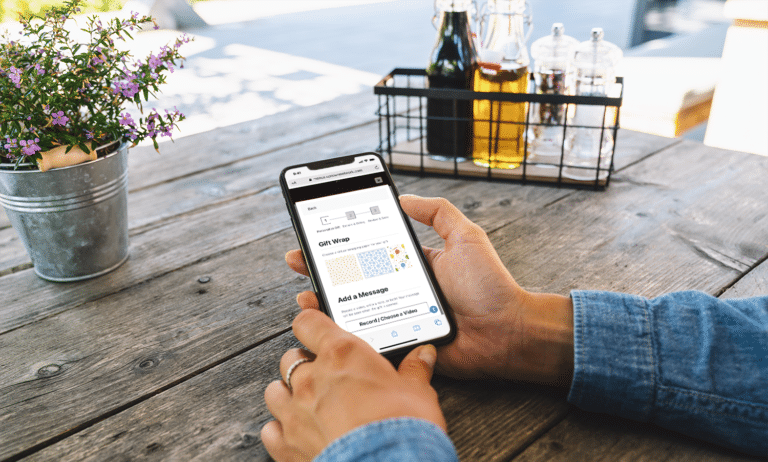
How Restaurants are Using Interactive AR in 2021
by Stephanie Miles
If there’s any silver lining to the havoc that Covid-19 has inflicted on the local business community, it’s that many businesses are using this time to experiment with new digital marketing tools and solutions. Platforms dedicated to local commerce fulfillment and curbside pickup have flourished, as have mobile payments and order-ahead apps. As restaurants and other businesses look at creative ways to boost cash flow in 2021, augmented reality has come further into focus.
Restaurants, retailers, and other local businesses looking to engage customers in a socially-distant way are giving AR-enabled interactive experiences a try. What this looks like in the real world varies from business to business, and platform to platform. Regardless, AR interactivity gives restaurants and other businesses the ability to deliver digital experiences and goods in a personal way, without risking the health of their customers or employees.
Here are five ways that businesses are using AR to interact with customers during the pandemic.
1. AR Gifting
An infusion of cash is especially valuable to restaurants right now. Uptown Networks recently launched a digital gift-giving solution for restaurants, so customers can infuse interactivity into gift-giving. Uptown’s solution has diners scanning a code from restaurant signage or marketing materials to bring up a menu of items and dishes to “gift.” The AR component comes into play when the recipient receives the gift. Rather than opening a static gift card, recipients open their gifts through mobile AR experiences that are delivered digitally. Uptown’s AR gift-giving solution can be integrated with existing POS systems and coupled with the company’s “Bring Your Own Menu” platform.
2. Interactive Advertising
Like all businesses, restaurants are always looking for ways to make their ads more engaging. AR-based mobile applications have the potential to make advertising more effective by bringing consumers into their screens. Restaurants like Bareburger, a fast-casual burger chain, and Panera have used AR to create hyper-realistic menus, as well as Snapchat Lenses that show immersive virtual experiences with the restaurant’s own dishes. CPG brands like Coca-Cola have also been able to integrate AR features into large billboards, so drivers passing by can get more personalized views of the products the company sells.
3. Virtual Renderings
Beauty brands and fashion retailers have pioneered the use of AR for virtual try-on sessions, but businesses in the food and hospitality industry are using similar tactics to meet customer demand during periods of lockdowns and social distancing orders. At Magnolia Bakery in New York City, for example, AR is used to present virtual renderings of custom cakes and other speciality items. Virtual renderings allow customers to see what their custom orders will look like without coming into the business in-person. Magnolia has also developed an AR-based catering menu, so customers can experience the bakery’s offerings without being able to smell or see the items themselves.
4. Living Product Labels
Wineries and breweries had a particularly challenging year in 2020. In 2021, more wineries could adopt the strategy developed by Treasury Wine Estates, which partnered with a mobile app developer to create an ongoing AR campaign. Treasury created a series of animated characters for the label on its 19 Crimes wine. When triggered with a mobile device, the characters on the wine bottle labels begin to speak to the user. The 19 Crimes label depicts various prisoners, modeled on the history of the founding of Australia as an English Penal colony. Creating so-called “living labels” can generate excitement and engagement for restaurants and other hospitality businesses with private-label brands.
5. Pokémon Go Sponsored Locations
The wildly-successful mobile app developer Niantic gives local businesses, including restaurants, the ability to generate more foot traffic through AR gaming. Niantic is the publisher behind Pokémon Go, the mobile gaming app that brought AR into the mainstream back in 2016. Local restaurants can partner with Niantic to become Sponsored Locations. This establishes the businesses as waypoints in the game, which effectively drives Pokémon Go players into participating restaurants and stores. Pokémon Go players see Sponsored Locations on their game maps, and they get rewards for visiting the businesses. The program is in Early Access Beta, however it is currently on pause due to Covid-19.
 Stephanie Miles is a senior editor at Street Fight. A version of this article previously appeared in Street Fight, reproduced here based on an editorial partnership.
Stephanie Miles is a senior editor at Street Fight. A version of this article previously appeared in Street Fight, reproduced here based on an editorial partnership.






